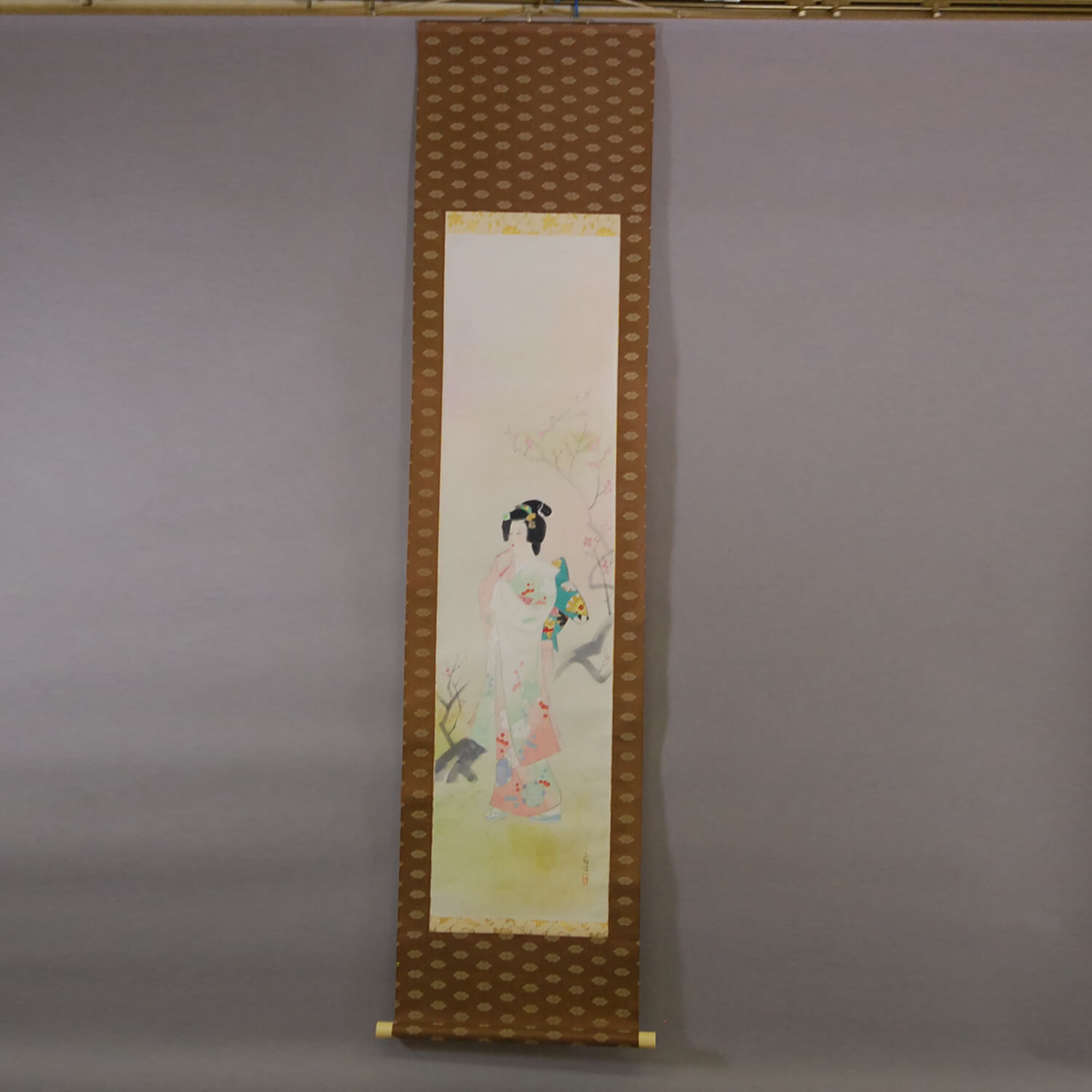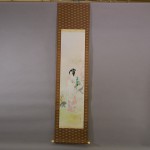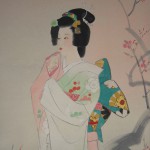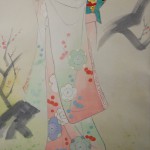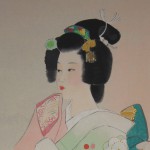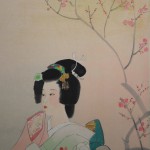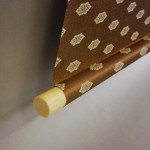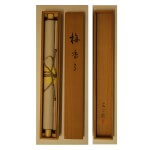Products Lineup
News / Blog
Other Menus
Woman and Plum Blossoms / Hideharu Morita - Ume-kaoru
- Product ID
- 0068
- Name
- Hideharu Morita
- Profile
1910-
An associate member of the Nitten Exhibition
A disciple of Shinsui Itou- Size
- 515mm x 1930mm
- Roller End Material
- Artificial ivory
- Material of the Work
- Japanese paper
- Price
- JPY 80,000
- Stock Condition
- In stock
- Payment: Click the Paypal Mark
- Duty and Taxes
Import duty and taxes are beyond our control and may apply to your shipment. Please noted that these fees are the responsibility of the buyer.
- Description
Hideharu Morita studied painting techniques under Shinsui Itou, who was a great master of “bijinga” (portrait of a beautiful women). Hideharu Morita’s bijinga follows the orthodox tradition of the Utagawa school, which was the largest school of “Ukiyoe” (Japanese woodblock prints) “Eshi” (painters).
A woman who has walked out to see plum blossoms is depicted in this work. After gazing on the plum blossoms with rapture, she comes to her senses and begins to care about what bystanders might think. It is very interesting to imagine what she is looking at. One of the great charms of a bijinga is the way in which our imagination is drawn into the depths of the woman’s heart. Hideharu Morita attracts viewers with only her gaze. This feat is wonderful.

